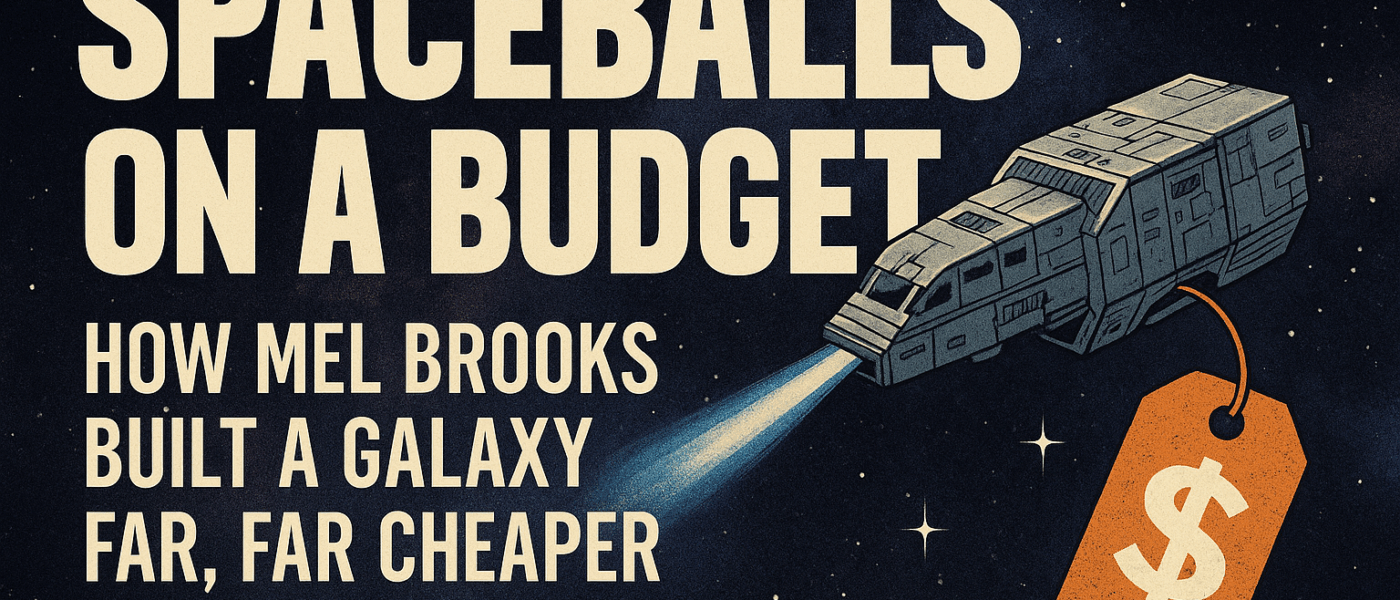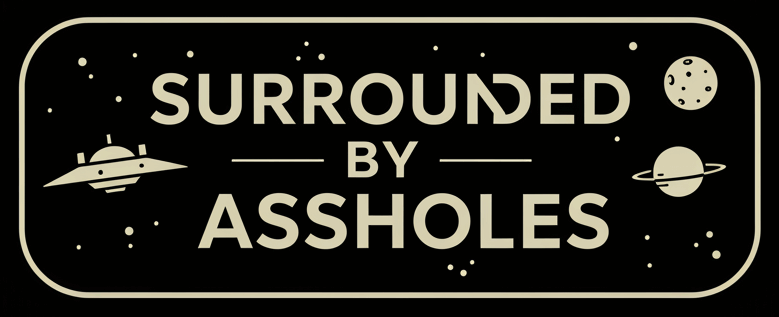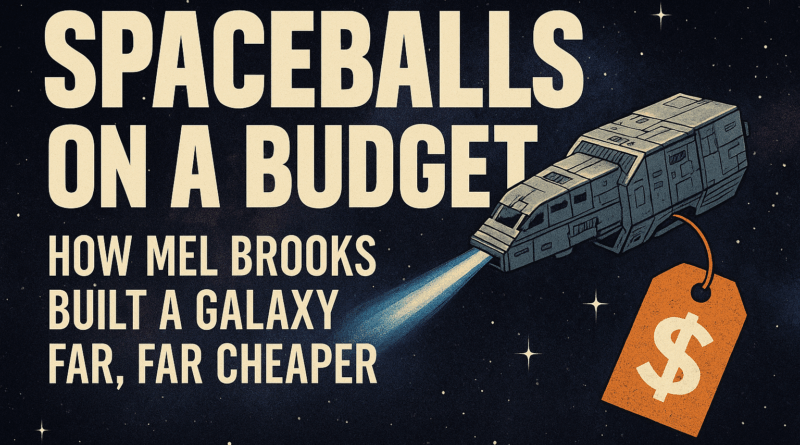Spaceballs on a Budget: How Mel Brooks Built a Galaxy Far, Far Cheaper

Behind the Schwartz, beyond the desert combs, and far beneath the ludicrous speed exterior of Spaceballs lies a budget-conscious masterpiece that proves you don’t need a trillion-dollar CGI engine to make something unforgettable. You just need Mel Brooks, a mountain of wit, and enough absurdity to fuel a Winnebago through hyperspace. Despite being Mel Brooks most expensive movie at the time, it was still less than many blockbusters in the 1980’s.
The space battles? Miniatures. The ships? Toys with lights and string. And somehow, they work. The enormous “Spaceball One” ship that takes nearly a full minute to pass by in the opening shot is a practical effect, and that joke only lands because it feels just real enough. It’s deliberately excessive—and completely hilarious.
While Star Wars aimed for realism with ILM’s groundbreaking work, Spaceballs aimed for the comedic sweet spot where “real enough” meets “this is ridiculous.” Instead of dumping money into high-tech, the team leaned into exaggerated physical models and made parody the priority. Every bolt and blinking light on those ships screams, “We had just enough money to make this look awesome, but not a dime more.”
Hilariously Low-Tech Effects
The special effects budget for Spaceballs was a fraction of its spacefaring inspirations, but you wouldn’t know it based on how hard the visual gags land. The beam-down scene? Just walk into the next room. The radar? Literally jammed—with actual jam. Yogurt’s magical floating ring? A fishing line and faith in comedy.
And let’s not forget the Schwartz sabers, instead of investing in expensive glowing props, the team used literal glowing rings and animated beams later. The effects were purposefully over-the-top, slightly cheesy, and 100% brilliant.
Sets Built on a Sandwich Budget
Mel Brooks wasn’t about to spend millions building massive sets. He chose clever camera angles, modular set pieces, and props recycled from other productions. Eagle-eyed fans have spotted familiar control panels, switches, and spaceship interiors from other sci-fi flicks, all repurposed and recontextualized with the Brooks touch.
The Eagle 5 Winnebago? A practical build with some glorious model work. The desert? The same dusty wasteland used by countless other productions, only now with giant combs scraping the sand because why not?
Recycled Props and Industrial-Strength Comedy
Costumes? Parodies with a twist. Dark Helmet’s ludicrously oversized headgear was custom, but everything else from his cape to his codpiece looked like it came from the local “Evil Villain Spirit Halloween.” The costumes for the Spaceball troopers looked like knockoff stormtroopers found at a yard sale, with notably more fabric and less plastic, but strategically positioned. And that’s the point. Brooks understood that the parody landed best when it felt just close enough to the original.
The production borrowed everything it could, from costumes to sound effects to lighting setups. The savings were real. The comedy? Even more so.
Mel Brooks: Director, Genius, Frugal King
Mel Brooks didn’t just direct the movie—he orchestrated a financial miracle. With a budget of around $25 million, Brooks created a film that has outlived many big-budget contemporaries. Considering he spent $5M of that $25M at Lucasfilm for post-production work, it’s even more impressive for the remaining portion. He leaned on practical effects, sharp writing, and a cast of committed comedic legends.
And he made every penny count.
The Moranis Factor: Pure Value
Let’s not forget Rick Moranis—Dark Helmet himself—who didn’t just show up, he owned the movie. His performance is a masterclass in committed absurdity. He turned what could have been a throwaway spoof into a character so bizarre, so memorable, that he basically invented an entirely new archetype: the insecure mega-villain with a Napoleon complex.
Moranis brought depth to Dark Helmet on a shoestring budget and in an oversized helmet.
Stretching Dollars into Galaxy-Sized Laughs
Spaceballs is living proof that you don’t need blockbuster cash to make a cultural icon. You need a vision, a team willing to get weird, and a healthy disrespect for what’s “standard” in filmmaking.
From dollar-store stormtroopers to Fisher-Price ship controls, Spaceballs turned low-budget necessity into high-budget parody gold. Mel Brooks and his team didn’t just spoof a genre—they reinvented how parody could look, feel, and stick in the minds of fans for generations.
Because at the end of the day, it doesn’t matter how much you spend—if your audience can quote your film 30 years later, you’ve won.
Now excuse us while we go buy Spaceballs: The Flame Thrower—the kids love it.

